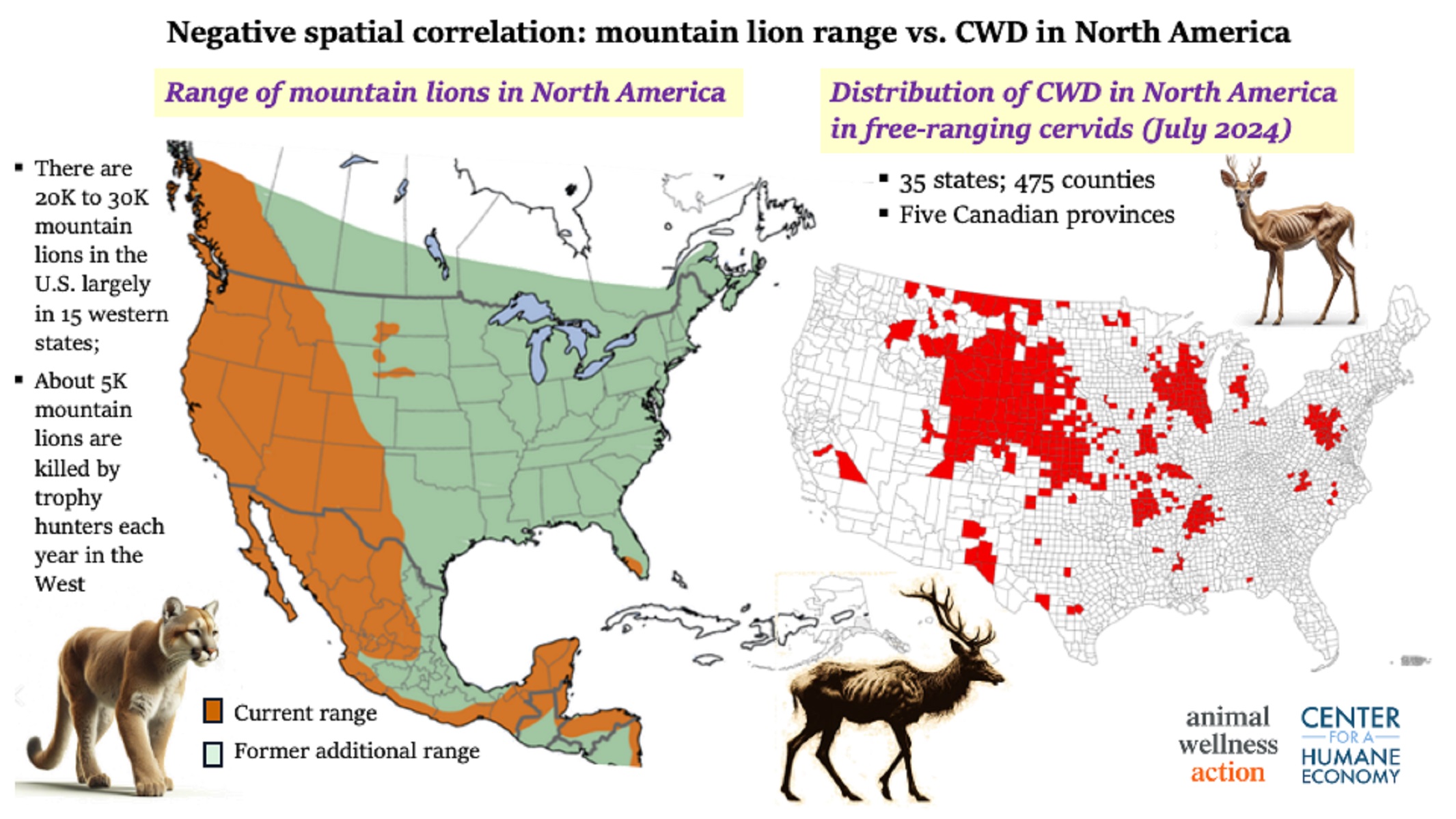Mountain lions in the Rocky Mountains are doing more than just prowling the wilderness—they’re performing a vital service for Colorado’s deer and elk populations, and by extension, for the state’s economy. A new report by Dr. Jim Keen, a former USDA veterinarian and infectious disease scientist, reveals that these apex predators are significantly reducing the spread of Chronic Wasting Disease (CWD), a fatal neurological disorder akin to Mad Cow Disease that has plagued Colorado’s cervid populations.
Colorado’s deer and elk herds, symbols of the state’s wild beauty, have been under siege by CWD for decades. The disease, which first emerged among captive deer at Colorado State University 50 years ago, has since spread to wild populations, infecting 42 of 51 deer herds and 17 of 42 elk herds in the state. With no cure or vaccine available, the disease poses a severe threat not only to wildlife but also to the state’s rural economies that depend on hunting and wildlife-related activities.
Dr. Keen’s report, titled Big Cats as Nature’s Check Against Disease, highlights how mountain lions selectively prey on CWD-infected deer and elk, acting as a natural check on the disease’s spread. This predatory behavior could save billions in economic value tied to Colorado’s outdoor recreational activities, including hunting and wildlife watching.
“Mountain lions are nature’s answer to CWD,” says Dr. Keen. “By preying on sick animals, they reduce the prevalence of the disease and help maintain healthy deer and elk populations, which are crucial for Colorado’s ecosystems and economy.”
The report underscores four key lines of evidence supporting predator-driven disease control:
Predator-Prey Ecology & Disease Modeling: Mathematical models indicate that mountain lions and other predators can significantly reduce CWD prevalence over time.
Empirical Observations: Field studies in Colorado show that mountain lions are more likely to target CWD-infected deer.
Laboratory Experiments: Research suggests that CWD-infected proteins may become inactive after being digested by predators like mountain lions, reducing environmental contamination.
Disease Biogeography: CWD is less prevalent in regions where predators like mountain lions and wolves freely prey on cervids, such as the Greater Yellowstone area and the upper western Great Lakes region.
The report also challenges the practice of trophy hunting mountain lions in Colorado, which has become a highly commercialized and technologically advanced industry. With over 500 lions killed annually, primarily by out-of-state hunters, the loss of these predators could exacerbate the spread of CWD and undermine the long-term health of deer and elk populations.
“This isn’t just about saving lions; it’s about saving our wildlife, our economy, and our way of life in Colorado,” says Elaine Leslie, Ph.D., a wildlife biologist and former Chief of Biological Services for the National Park Service. “Mountain lions are essential for controlling CWD and ensuring the sustainability of our rural economies.”
Animal Wellness Action and the Center for a Humane Economy are spearheading a coalition of 100 organizations to support a ballot initiative for November 2024, aiming to ban trophy hunting of mountain lions in Colorado. The initiative seeks to protect these vital predators and preserve Colorado’s billion-dollar hunting and wildlife-watching industries.
For more information on the ballot initiative and the critical role of mountain lions in Colorado’s ecosystems, visit www.CatsArentTrophies.org.






















